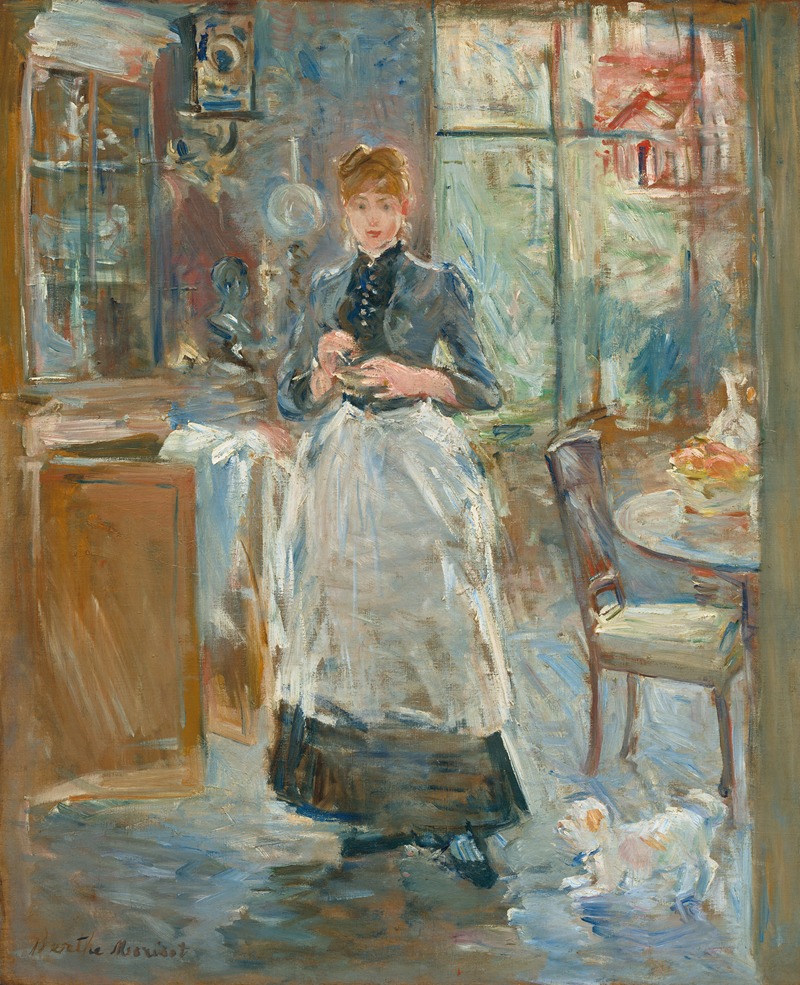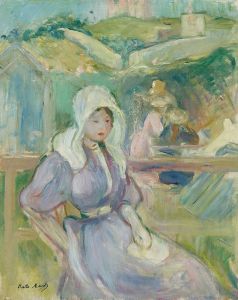
In the Dining Room
A hand-painted replica of Berthe Morisot’s masterpiece In the Dining Room, meticulously crafted by professional artists to capture the true essence of the original. Each piece is created with museum-quality canvas and rare mineral pigments, carefully painted by experienced artists with delicate brushstrokes and rich, layered colors to perfectly recreate the texture of the original artwork. Unlike machine-printed reproductions, this hand-painted version brings the painting to life, infused with the artist’s emotions and skill in every stroke. Whether for personal collection or home decoration, it instantly elevates the artistic atmosphere of any space.
Berthe Morisot's painting In the Dining Room (Dans la salle à manger) is a notable work by the French Impressionist artist, created in 1886. Morisot, one of the founding members of the Impressionist movement, was renowned for her innovative use of light, color, and brushwork, as well as her focus on domestic and intimate scenes, often featuring women and children.
This painting depicts a quiet moment in a dining room, with a young woman standing near a table set with dishes and a carafe. The composition captures the interplay of light and shadow, a hallmark of Impressionist art, as natural light filters through the room. Morisot's loose, fluid brushstrokes and soft color palette create a sense of immediacy and intimacy, drawing the viewer into the scene. The work reflects her interest in portraying everyday life, particularly the private, domestic spaces often associated with women during the 19th century.
In the Dining Room exemplifies Morisot's ability to convey mood and atmosphere through her distinctive style. The painting is also significant for its focus on the interior space, a recurring theme in her oeuvre. Unlike many of her male contemporaries, who often painted outdoor scenes, Morisot frequently explored the world of women within the home, offering a unique perspective on modern life.
The painting is currently housed in the National Gallery of Art in Washington, D.C., where it is part of the museum's collection of Impressionist works. It continues to be celebrated as an important example of Morisot's contribution to the Impressionist movement and her role in redefining the representation of women and domestic life in art.
This work, like much of Morisot's art, challenges traditional artistic conventions of the time and highlights her innovative approach to composition and subject matter. Her ability to capture the subtleties of light and texture, combined with her focus on intimate, everyday moments, solidifies her legacy as one of the most important figures in Impressionist art.


















